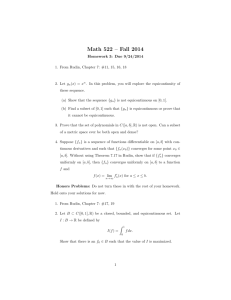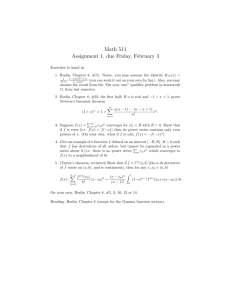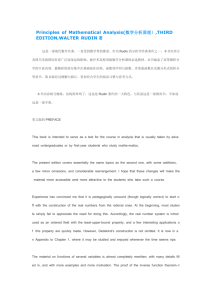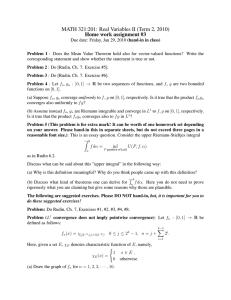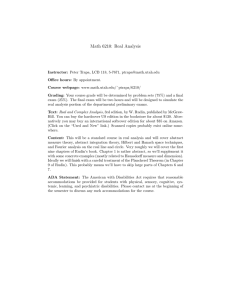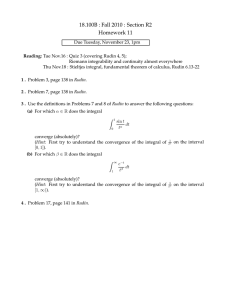M 365C
advertisement
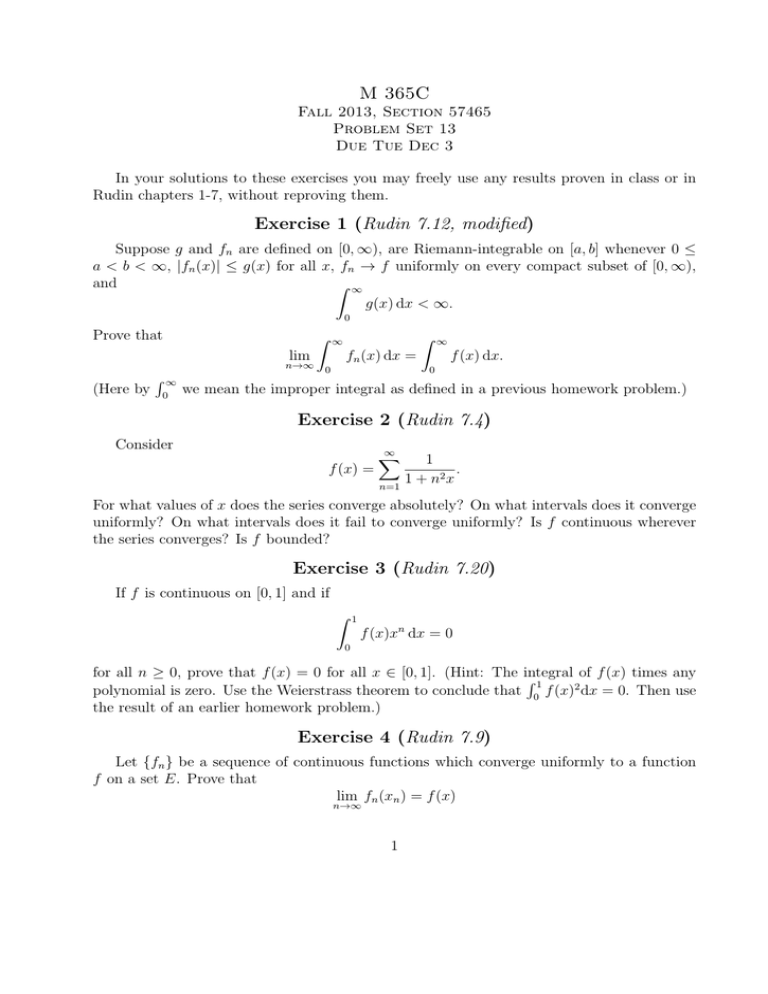
M 365C
Fall 2013, Section 57465
Problem Set 13
Due Tue Dec 3
In your solutions to these exercises you may freely use any results proven in class or in
Rudin chapters 1-7, without reproving them.
Exercise 1 (Rudin 7.12, modified)
Suppose g and fn are defined on [0, ∞), are Riemann-integrable on [a, b] whenever 0 ≤
a < b < ∞, |fn (x)| ≤ g(x) for all x, fn → f uniformly on every compact subset of [0, ∞),
and
Z ∞
g(x) dx < ∞.
0
Prove that
∞
Z
Z
lim
n→∞
(Here by
R∞
0
fn (x) dx =
0
∞
f (x) dx.
0
we mean the improper integral as defined in a previous homework problem.)
Exercise 2 (Rudin 7.4)
Consider
f (x) =
∞
X
n=1
1
.
1 + n2 x
For what values of x does the series converge absolutely? On what intervals does it converge
uniformly? On what intervals does it fail to converge uniformly? Is f continuous wherever
the series converges? Is f bounded?
Exercise 3 (Rudin 7.20)
If f is continuous on [0, 1] and if
Z
1
f (x)xn dx = 0
0
for all n ≥ 0, prove that f (x) = 0 for all x ∈ [0, 1]. (Hint: The integral
of f (x) times any
R1
2
polynomial is zero. Use the Weierstrass theorem to conclude that 0 f (x) dx = 0. Then use
the result of an earlier homework problem.)
Exercise 4 (Rudin 7.9)
Let {fn } be a sequence of continuous functions which converge uniformly to a function
f on a set E. Prove that
lim fn (xn ) = f (x)
n→∞
1
for every sequence of points xn ∈ E such that xn → x and x ∈ E. Is the converse true, i.e.
if this equation holds for every such sequence, does it follow that fn → f uniformly on E?
* Exercise 5 (Rudin 7.25)
Suppose φ(x, y) is a continuous bounded real function defined on the strip x ∈ [0, 1],
y ∈ R, and c is any constant. Prove that the initial-value problem
y 0 = φ(x, y),
y(0) = c
admits a solution, i.e. that there exists a function y(x) defined on [0, 1] such that y(0) = c
and y 0 (x) = φ(x, y(x)).
(See the long hint in Rudin which breaks this problem into six subparts.)
2

